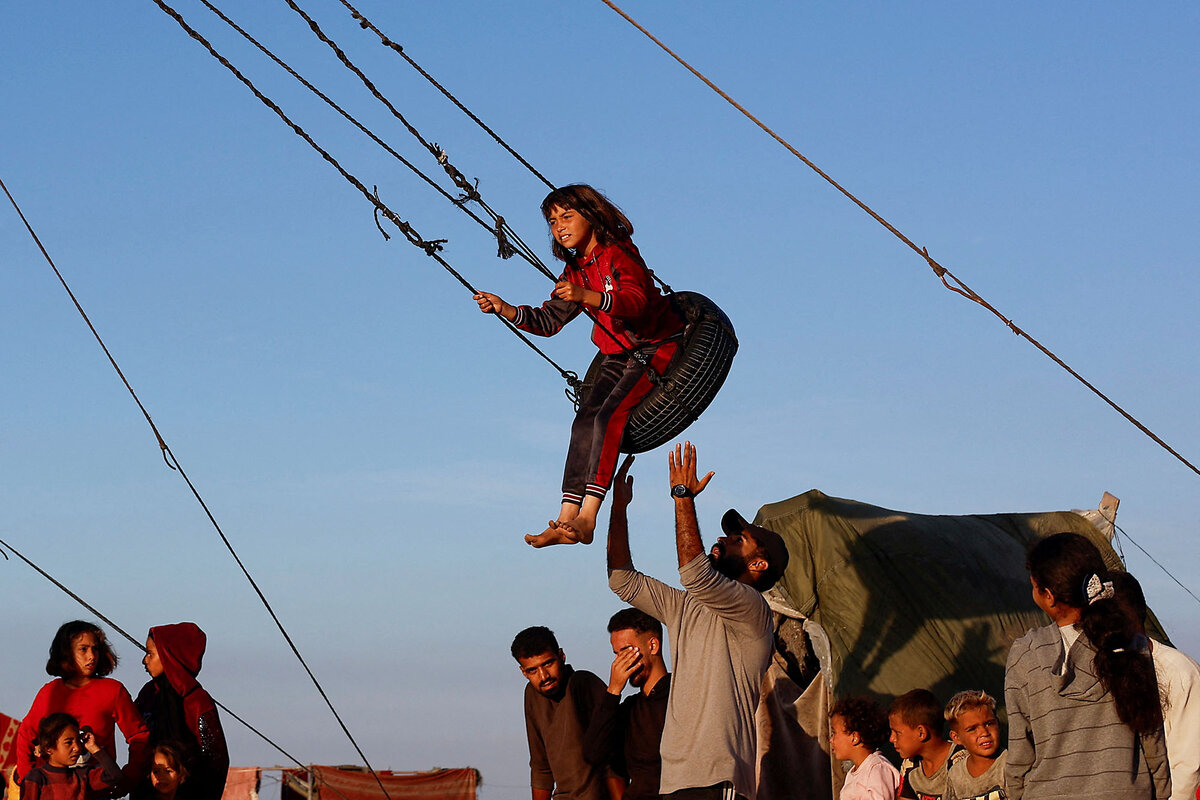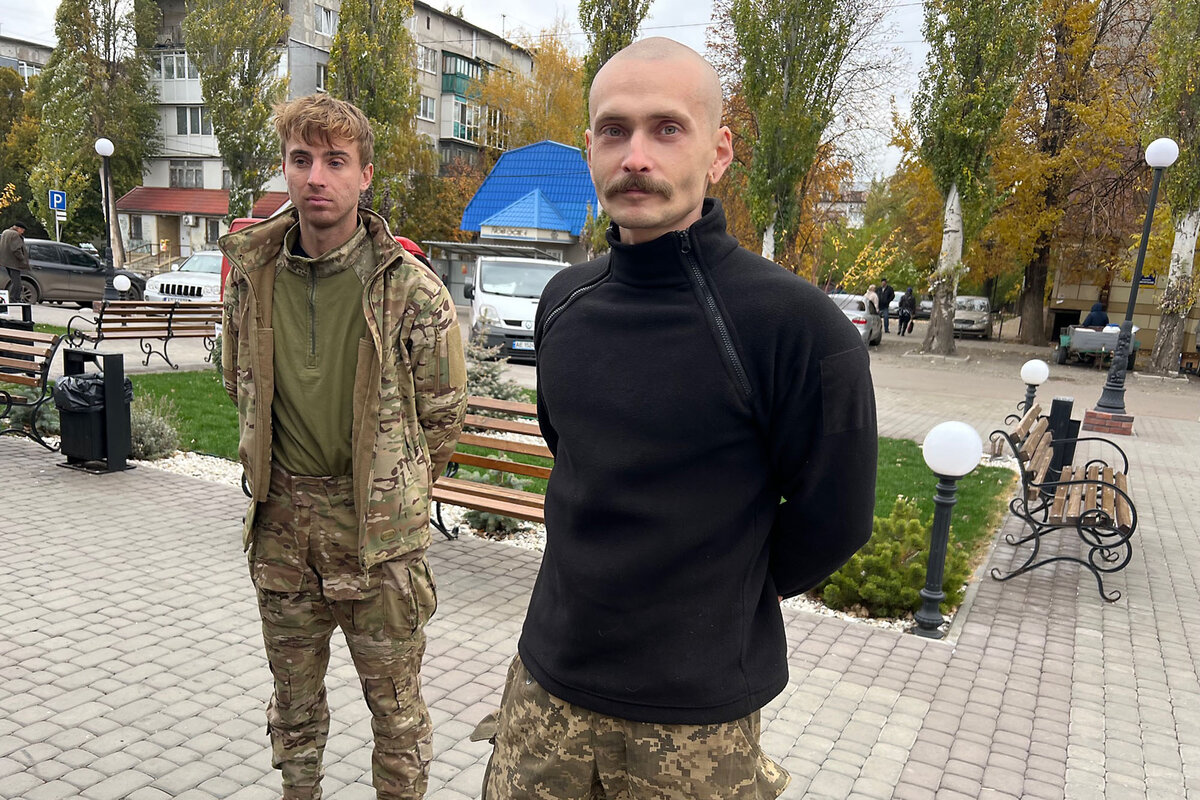The story of the grinding Russian-Ukrainian land battle is one of an imbalance of forces and supplies, mostly in Russia’s favor. Yet Ukraine finds ways to defy the odds, at least for a while.

Why is Christian Science in our name?
Our name is about honesty. The Monitor is owned by The Christian Science Church, and we’ve always been transparent about that.
The Church publishes the Monitor because it sees good journalism as vital to progress in the world. Since 1908, we’ve aimed “to injure no man, but to bless all mankind,” as our founder, Mary Baker Eddy, put it.
Here, you’ll find award-winning journalism not driven by commercial influences – a news organization that takes seriously its mission to uplift the world by seeking solutions and finding reasons for credible hope.
Explore values journalism About usMonitor Daily Podcast
- Follow us:
- Apple Podcasts
- Spotify
- RSS Feed
- Download
 Amelia Newcomb
Amelia Newcomb
Two weeks ago, the Monitor’s Howard LaFranchi was the rare reporter to get into Pokrovsk, Ukraine, which is facing a tough Russian onslaught. It hasn’t fallen, something many expected in September, when Monitor writer Dominique Soguel reported from there about civilian evacuations.
It’s a story that has meaning not only for Ukrainians but for the world as well. Yet a group of Ukrainian officials who visited the Monitor recently posed a searing question: Are Americans thinking of us as we struggle to defend our democracy? One woman told of her father, who was killed fighting last year. Her husband is a soldier as well. Eventually, she said, I, too, may wear a uniform.
Their commitment to their freedom was unassailable. We reassured them that our commitment to sharing their stories is the same.
Already a subscriber? Log in
Help fund Monitor journalism for $11/ month
Monitor journalism changes lives because we open that too-small box that most people think they live in. We believe news can and should expand a sense of identity and possibility beyond narrow conventional expectations.
Our work isn't possible without your support.
Today’s stories
And why we wrote them
( 6 min. read )
Today’s news briefs
• Republicans control U.S. House: Republicans completed the party’s sweep into power. A House Republican victory in Arizona and a win in California gave the GOP the 218 House victories to make up the majority.
• Israel accused of war crimes: Israeli authorities have caused a forced displacement of Palestinians in Gaza to an extent that constitutes war crimes and crimes against humanity, Human Rights Watch said.
• Costs of fighting climate change: Developing countries need at least $1 trillion per year by the end of the decade to cope with climate change, economists said during the ongoing COP29 climate summit in Baku, Azerbaijan.
• Record dry conditions in the U.S. Northeast: The region is undergoing some of its driest conditions in 120 years.
( 5 min. read )
President-elect Donald Trump’s controversial Cabinet choices came after a series of selections widely deemed more credible. They will present an immediate litmus test for Republican senators.
( 5 min. read )
President-elect Donald Trump’s untraditional pick for secretary of defense, coupled with reports of plans to create a board to review and remove senior military officers, sent ripples of concern throughout the defense establishment.
Patterns
( 4 min. read )
President-elect Donald Trump has pledged to shake up America’s relations with the rest of the world. In Europe, that sounds more like a threat than like a promise.
( 3 min. read )
With “All We Imagine as Light,” an Indian filmmaker draws our attention to personal stories – and the many ways a life can have meaning.
The Monitor's View
( 2 min. read )
In the mountainous regions of northern Ethiopia, a people divided by a horrific war that ended just two years ago are about to find out what they share. If they succeed, it could shape a new approach to what is called transitional justice for postconflict societies.
As part of a peace deal between the central government in Addis Ababa and rebellious militia in the state of Tigray, both sides have committed to reconciliation. Skeptics of the process abound, but as one local teacher told University of Gonder researchers, forgiveness and reconciliation can end “misunderstandings and disobedience to promote harmony in daily life, ... creating a united society.”
The conflict, one of the deadliest since the end of the Cold War, killed more than 500,000 soldiers and 360,000 civilians. During two years of fighting, the government sealed the Tigray enclave from humanitarian aid. More than 80% of the population of 5.5 million people was put at risk of deliberate starvation. Rape was weaponized.
In April, the government approved establishing a special prosecutor and court as well as a truth commission with the power to grant amnesty for admissions of guilt and remorse. Since then, however, international agencies and civil rights organizations have accused Addis Ababa of dragging its heels.
Yet throughout the country, even in places where ethnic skirmishes continue, communities are beginning the work of building peace on their own. Local initiatives are turning victims into healers. A key target of their work is overcoming traditional social taboos and gender-based inequality through empathy and listening.
In Bora, a valley in Tigray terraced by farms, women who lived through the 1994 genocide in Rwanda are training local women to set up groups to salve the wounds of sexual violence and promote economic independence through small female-owned businesses.
“In our culture, women are considered as less,” Elizabeth Kidane, a Tigrayan medical student who is helping survivors, told Al Jazeera last month. She said that attitudes are changing through “community-based healing sessions, creating awareness on mental health ... [and working] with service providers, teachers and religious leaders.”
The mood Ethiopians share for peace and reconciliation may be most apparent in their desire for forgiveness. In late September, thousands gathered in cities across the country to celebrate the Orthodox Christian festival of Meskel. Its importance, Berhanu Admass, a church deacon in Addis Ababa, told The Associated Press, is “to have us embrace forgiveness and pray for our peaceful co-existence.”
The University of Gonder study of forgiveness rituals published last month offered a granular look at how Ethiopians resolve family, ethnic, and religious conflict locally through dialogue. It found that “encouraging the character virtue of forgiveness is crucial for effective and sustainable peacebuilding.”
Since the end of World War II, according to the website Justice Data, 76% of countries have established some form of justice prior to fully ending hostilities. Sometimes, as Ethiopia is showing, that work starts with ordinary people seeing peace as greater than social differences.
A Christian Science Perspective
Each weekday, the Monitor includes one clearly labeled religious article offering spiritual insight on contemporary issues, including the news. The publication – in its various forms – is produced for anyone who cares about the progress of the human endeavor around the world and seeks news reported with compassion, intelligence, and an essentially constructive lens. For many, that caring has religious roots. For many, it does not. The Monitor has always embraced both audiences. The Monitor is owned by a church – The First Church of Christ, Scientist, in Boston – whose founder was concerned with both the state of the world and the quality of available news.
( 4 min. read )
Glimpsing that God’s creation is ever complete and whole brings healing and satisfaction to our lives.
Viewfinder

A look ahead
Thanks for joining us today. Tomorrow, we’ll have a deep read on women carving out a place in building trades still dominated by men.








